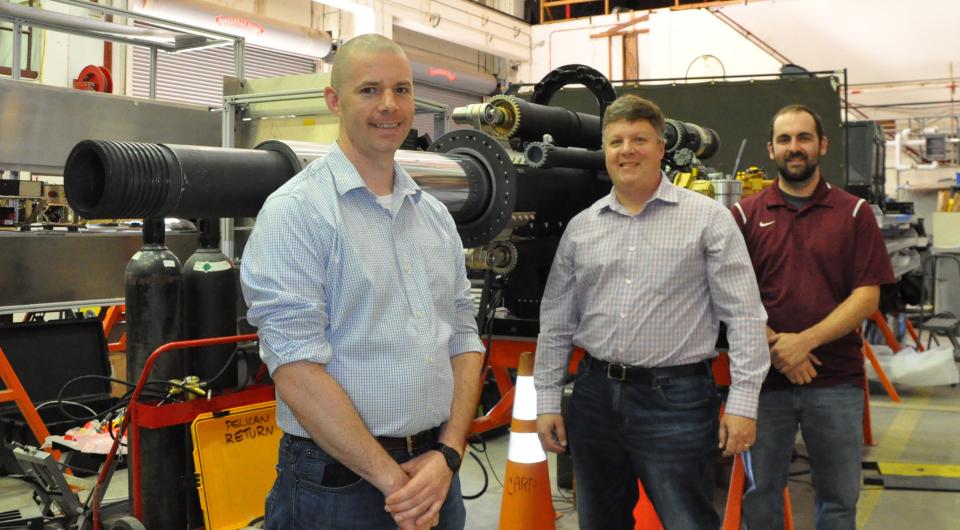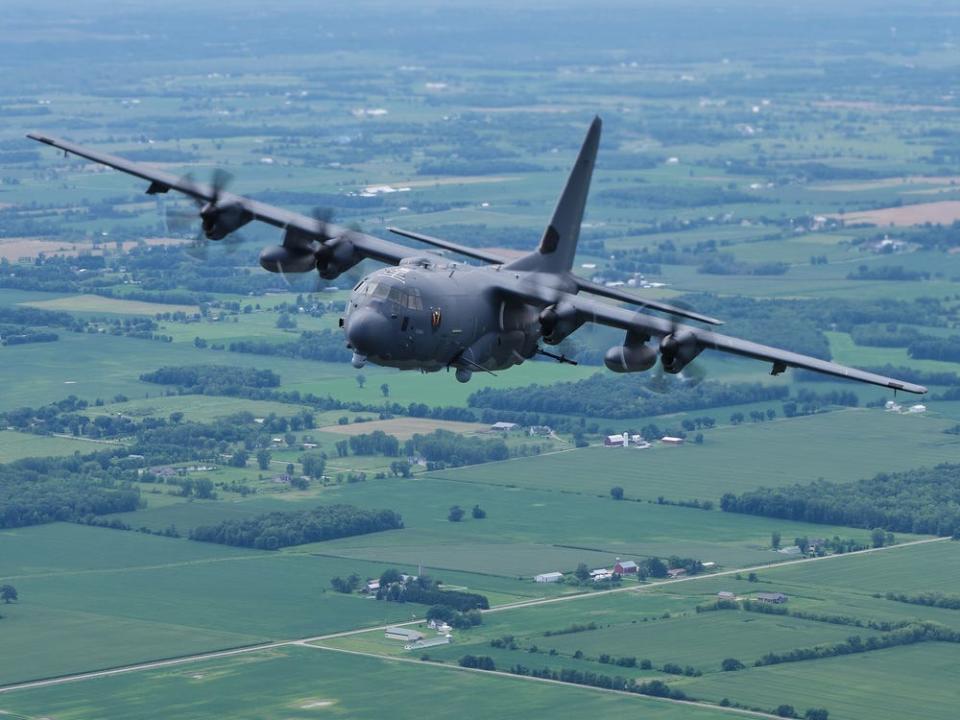Success! Eglin AFB, Hurlburt Field airmen involved in improving AC-130 gunship weapon
EGLIN AFB — Both Eglin Air Force Base and nearby Hurlburt Field were part of a U.S. Navy project involving the design, development and delivery of an upgraded 105mm gun made with the AC-130 gunship in mind.
The gunships are a version of the ubiquitous and long-serving multiple-role four-engine turboprop airplane used at Hurlburt and elsewhere across U.S. military forces.
Engineers at Virginia's Naval Surface Warfare Center Dahlgren Division designed, developed and delivered the upgraded weapon during a process that included trips to Eglin and Hurlburt (headquarters of Air Force Special Operations Command) for testing and direct collaboration with the warfighter.
The engineers also visited Wright-Patterson Air Force Base in Ohio, Cannon Air Forece Base in New Mexico and Robins Air Force Base in Georgia in the process of getting the weapon to the warfighters who will use it. Additionally, gunners and technicians also came to Dahlgren to provide insight on the weapon's performance after testing.

New agreement: Okaloosa County and Eglin Air Force Base ink new airport agreement
Hurlburt gives back: Hurlburt Field Angel Tree wraps 1,000 gifts, benefits 98 families
The 105mm Gun Aircraft Unit (GAU) allows warfighters on the ground to complete their missions more effectively and safely while the AC-130 provides close air support, air interdiction and force protection. The new weapon replaces the former gun system aboard the AC-130 gunships and positively impacts the warfighters’ ability to operate and maintain the system in the field.
“This has become a much more reliable system with less maintenance,” said Matthew Buckler, NSWCDD's Battle Management System (BMS) Gun Weapons System lead mechanical engineer. “If we can get a system that’s more reliable, that’s more repeatable, that works and that allows the warfighter to complete their mission every time — that’s a huge benefit for the warfighter.”
From the start of the design effort, the Dahlgren engineers behind the 105mm gun worked directly with the participating troops to get real-time feedback from experienced gunners and technicians.
“Personally, this is the most rewarding work I’ve done in my engineering career hands down,” said Gregory Fish, NSWCDD’s GAU lead analyst. “It’s a fantastic place to work — incredible sense of accomplishment and achievement. And when we get the debriefs of what the weapon effectiveness is out in the field, it makes you feel like you’ve done something that makes a difference because these (GAU’s) are literally the tip of the spear.”
The previous iteration of the AC-130’s 105mm gun system comprised the M102 howitzer and M137A1 recoil mechanism, which are no longer supported by the Army. That meant an upgrade was necessary due to obsolescence and advancements in technologies since the original recoil mechanism was designed.

More: 'This is why we test': One win, one setback in recent Eglin AFB-connected weapons tests
The upgrades to the 105mm GAU are sweeping, but the engineers at Dahlgren were careful to ensure that the functionality, accuracy and usability of the weapon remain largely the same.
Throughout the iterative design process, Buckler said, the team encountered challenging yet navigable obstacles and tackled each issue as it came.
“We’ve described (the development process) as peeling back an onion,” Buckler said. “You get the most immediate issue and solve that one. Then when you solve that one, something else becomes more important and you kind of just keep peeling it back until you’ve essentially solved all of your major issues... ."
This article originally appeared on Northwest Florida Daily News: Eglin AFB, Hurlburt Field airmen involved in improving gunship weapon

